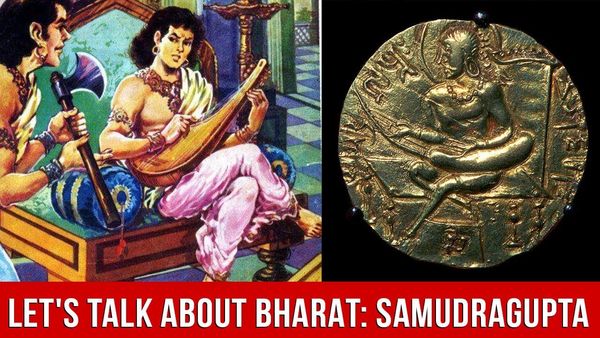A lot has been said about King Samudragupta (r. c. 335 – c. 380 CE), the most powerful ruler of the Gupta Empire. A lot has been said about him and has been documented as well. Here, we share his biography along with some interesting facts.
Early Life of King Samudragupta
Samudragupta was one among several sons of Chandragupta I, the Magadh ruler of the Gupta dynasty. His mother was Kumaradevi, the Lichchhavi princess.
While, his father ruled from Pataliputra, the capital, he worked under him as an apprentice. Eventually, even though he had elder brothers it was Samudragupta who became his father’s successor.
His Expansion, Reign and Military Campaigns
Apparently, it was his father Chandragupta I who chose Samudragupta to be his heir over other contenders. This is the reason why Samudragupta had to fight and repress revolts post the death of his father.
Once he pacified the kingdom post the revolts during his early days, he as a fourth ruler of the Gupta dynasty then began his series of wars to expand his kingdom. He had inherited a kingdom which extended from present day Allahabad to the borders of Bengal.
buy amoxil online https://buynoprescriptiononlinerxx.net/amoxil.html no prescription
His reigning period led to huge military campaign. He started acquiring the neighbouring kingdoms of Padmavati (in Central India) and Ahichchhatra (Rohilkhand) and then moved east and conquered the whole of Bengal.
King Samudragupta also acquired few kingdoms in the area of present day Nepal and even forced the area of Assam to pay him tribute. He also got hold of tribal states like the Yaudheyas, the Malvas, the Maduras, Arjunayanas, and the Abhiras along with few areas that come under the modern day Kashmir and Afghanistan.
It is interesting to note that while he adopted the policy of “Digvijaya” – conquest and annexation in the ‘North’, he adopted the policy of “Dharma Vijaya” – conquest but not annexation in the ‘South’.
buy clomid online https://buynoprescriptiononlinerxx.net/clomid.html no prescription
Samudragupta is also the man behind the monetary system of the Gupta era. He minted 8 different types of coins – the Standard Type, the Battle Axe Type, the Archer Type, the Ashvamedha Type, the Tiger Slayer type, the Kacha Type, the Lyrist type and the the King-Queen Type.
His Interests
Samudragupta had special interest in art and poetry. This is the reason why he had Harisena, the renowned poet in his court. It was him who inscribed his King’s valor and bravery on the famous Pillar of Allahabad.
Because of his love for poems, Samudragupta was also called as Kaviraj. Besides, he loved playing flute and also enjoyed poetry recitation.
The Napoleon of India
It is observed that King Samudragupta fought every war with great strategy and valour. According to the available sources, it is noted that the body of Samudragupta covered with marks of hundred wounds which were caused by the blows of battle spears, axes, pikes, arrows, swords, javelins, barbed darts, lances, iron arrows and many other weapons.
buy flomax online https://buynoprescriptiononlinerxx.net/flomax.html no prescription
Perhaps this is the reason why Art Historian V.A. Smith referred King Samudragupta as the Napoleon of India for all his great victories in the Indian subcontinent. But, many other historians do not agree with the comparison as Samudragupta was neither power-hungry nor was defeated and/or sent to exile like Napoleon Bonaparte.
Personal Life
Matrimonial alliances was quite important in the Gupta era as it was a significant aspect of their foreign policy. This is the reason why Chandragupta I married the Lichchhavi princess.
King Samudragupta too followed the suite. His successor Chandragupta II from his chief wife Datta Devi went on to become his heir. He too followed the policy of strengthening the empire by matrimonial alliances and married a princess from the Saka dynasty as well a princess of the Naga dynasty.
Sources and References:
English Translation from.the Pillar of Allahabad
Britannica Encyclopedia


